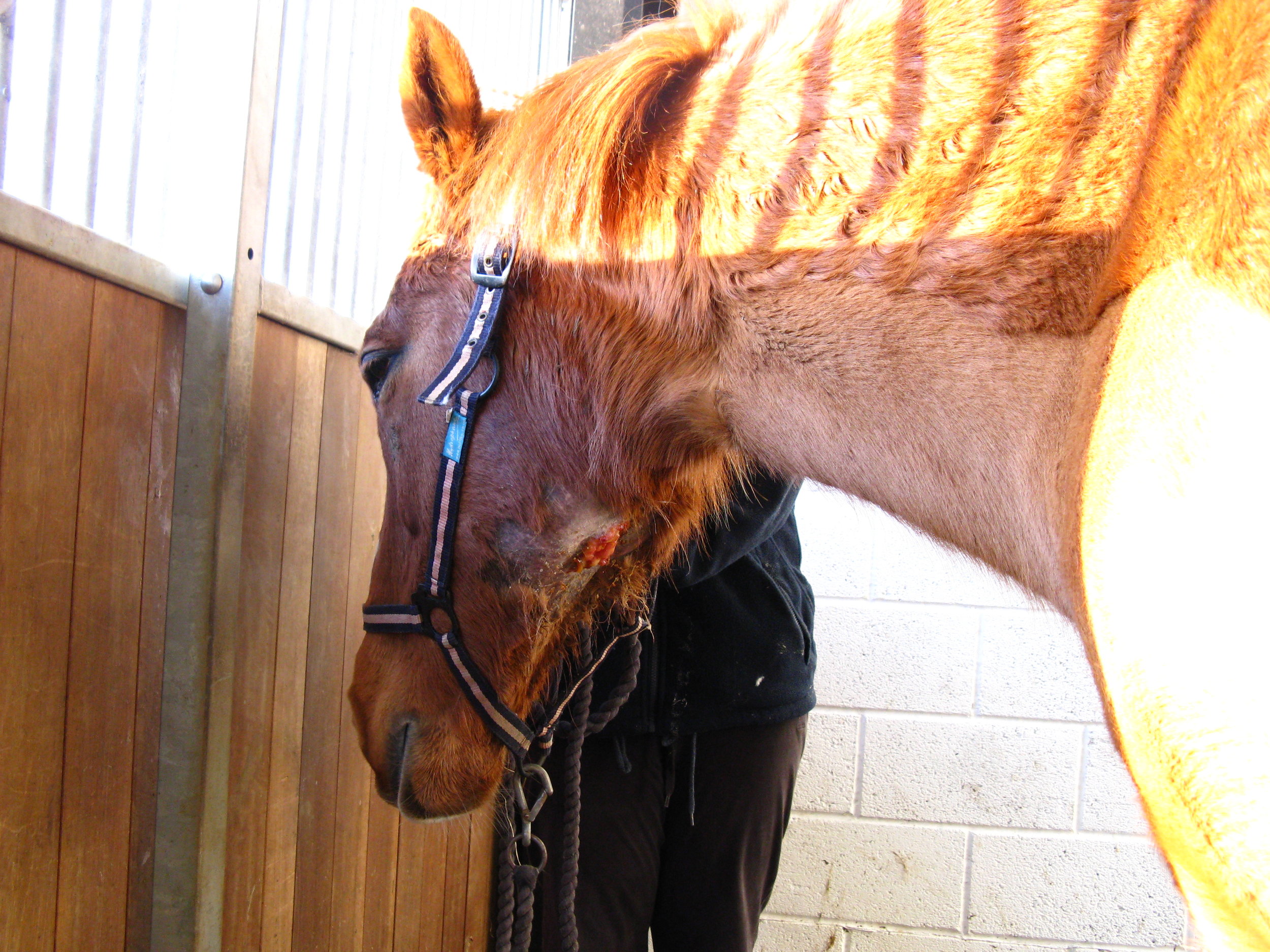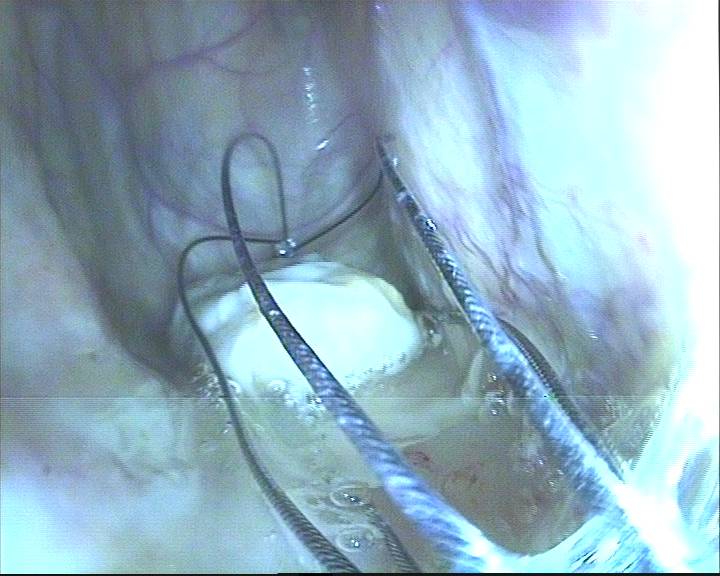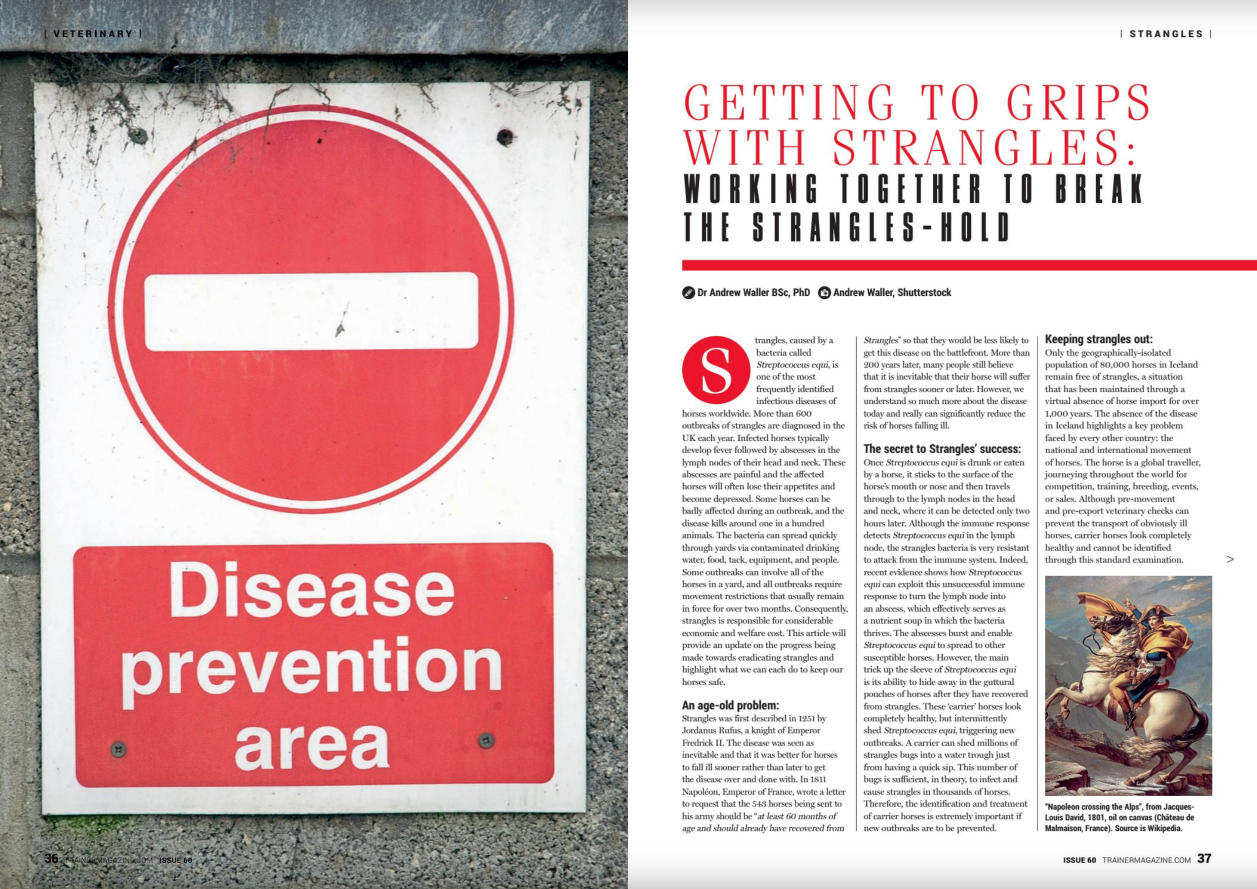Getting to Grips with Strangles: Working Together to Break the Strangles-hold
/Published in European Trainer, January - March 2018, issue 60.
Strangles, caused by a bacteria called Streptococcus equi, is one of the most frequently identified infectious diseases of horses worldwide. More than 600 outbreaks of Strangles are diagnosed in the UK each year. Infected horses typically develop fever followed by abscesses in the lymph nodes of their head and neck.
These abscesses are painful and the affected horses will often lose their appetites and become depressed. Some horses can be badly affected during an outbreak and the disease kills around one in a hundred animals. The bacteria can spread quickly through yards via contaminated drinking water, food, tack, equipment and people. Some outbreaks can involve all of the horses on a yard and all outbreaks require movement restrictions that usually remain in force for over two months. Consequently, Strangles is responsible for considerable economic and welfare cost. This article will provide an update on the progress being made towards eradicating Strangles and highlight what we can each do to keep our horses safe.
An age-old problem:
Strangles was first described in 1251 by Jordanus Rufus, a knight of Emperor Fredrick II. The disease was seen as inevitable and better for horses to fall ill sooner rather than later to get the disease over and done with. In 1811 Napoléon, Emperor of France, wrote a letter to request that the 543 horses being sent to his army should be “at least 60 months of age and should already have recovered from Strangles” so that they would be less likely to fall ill from this disease on the battlefront. More than 200 years later, many people still believe that it is inevitable that their horse will suffer from Strangles sooner or later. However, we understand so much more about the disease today and really can significantly reduce the risk of horses falling ill...
To read more - subscribe now!
Gallery






